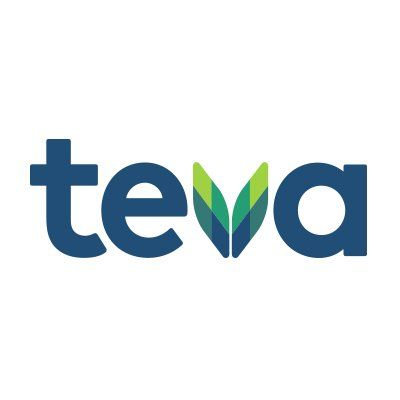预约演示
更新于:2025-05-07
Secondary amenorrhea
继发性闭经
更新于:2025-05-07
基本信息
别名 Loss of menstrual period、Periods have stopped、Secondary amenorrhea + [11] |
简介- |
关联
3
项与 继发性闭经 相关的药物靶点 |
作用机制 PR激动剂 |
在研机构- |
在研适应症- |
最高研发阶段批准上市 |
首次获批国家/地区 美国 |
首次获批日期1982-04-21 |
靶点 |
作用机制 PR调节剂 |
最高研发阶段批准上市 |
首次获批国家/地区 日本 |
首次获批日期1956-01-25 |
靶点- |
作用机制- |
在研机构- |
在研适应症- |
最高研发阶段无进展 |
首次获批国家/地区- |
首次获批日期1800-01-20 |
45
项与 继发性闭经 相关的临床试验CTR20244041
评估受试制剂地屈孕酮片(规格:10 mg)与参比制剂达芙通®(规格:10 mg)在健康成年受试者餐后状态下的单中心、随机、开放、单剂量、四周期、两序列、完全重复交叉生物等效性研究
主要研究目的:研究餐后状态下单次口服受试制剂地屈孕酮片(规格:10 mg,持证商:河南泰丰生物科技有限公司)与参比制剂地屈孕酮片(达芙通®,规格:10 mg,持证商:Abbott B.V.)在健康成年女性受试者体内的药代动力学,评价餐后状态口服两种制剂的生物等效性。 次要研究目的:评估受试制剂地屈孕酮片(规格:10 mg)和参比制剂地屈孕酮片(达芙通®,规格:10 mg)在健康成年女性受试者中的安全性。
开始日期2024-11-10 |
申办/合作机构 |
CTR20242976
中国健康女性受试者空腹和餐后状态下口服地屈孕酮片的随机、开放、两序列、四周期重复交叉设计生物等效性试验
(1)主要研究目的
研究空腹和餐后状态下单次口服受试制剂地屈孕酮片(规格:10mg,湖南醇健制药科技有限公司生产)与参比制剂地屈孕酮片(商品名:达芙通®,规格:10mg,Abbott Biologicals B.V.生产)在中国健康女性受试者体内
的药代动力学,评价两制剂生物等效性。
(2)次要研究目的
评价中国健康女性受试者空腹和餐后单次口服受试制剂(T)地屈孕酮片和参比制剂(R)地屈孕酮片(达芙通®)后的安全性。
开始日期2024-09-18 |
申办/合作机构 |
CTR20242989
中国健康女性受试者空腹和餐后状态下口服地屈孕酮片的随机、开放、两序列、四周期重复交叉设计生物等效性试验
本试验旨在研究健康受试者单次空腹和餐后口服Mankind Pharma Limited, India生产的地屈孕酮片(10 mg)的药代动力学特征;以Abbott Healthcare Products B.V.生产的地屈孕酮片(Duphaston®,10 mg)为参比制剂,比较两制剂中药动学参数Cmax、AUC0-t、AUC0-∞,评价两制剂的人体生物等效性。
次要目的:评估受试制剂和参比制剂在健康受试者中的安全性。
开始日期2024-08-29 |
申办/合作机构 |
100 项与 继发性闭经 相关的临床结果
登录后查看更多信息
100 项与 继发性闭经 相关的转化医学
登录后查看更多信息
0 项与 继发性闭经 相关的专利(医药)
登录后查看更多信息
1,905
项与 继发性闭经 相关的文献(医药)2025-05-01·The Nurse Practitioner
Evaluating primary amenorrhea in the primary care setting
Article
作者: Moore, Ginny ; Spero, Susannah ; Breiten, Kaitlyn H. ; Hopkins, Leslie
2025-04-01·International Journal of Biological Macromolecules
Therapeutic strategies: Bioactive hydrogels oxidized sodium alginate/strontium/betamethasone for preventing intrauterine adhesion
Article
作者: Yang, Shenyu ; Zhao, Yamin ; Chang, Lei ; Guo, Ruixia ; Wu, Fengling ; Tong, Ningyao ; Han, Liping ; Qiu, Luojie ; Li, Siyu ; Chen, Mengyu ; Miao, Qiuju ; Zhou, Junying ; Chen, Cheng
2025-03-01·Endocrine Practice
Clinical Characteristics, and Prevalence of Hepatic and Bone Mineral Density Abnormalities in Patients With Sheehan Syndrome: Data From a Tertiary Care Center
Article
作者: Patto, Shoiab Mohd ; Dutta, Pinaki ; Mir, Shahnawaz ; Baba, Mohammad Salem ; Bhat, Shabir Ahmad ; Lone, Suhail Shafi ; Bhat, Mohammad Hayat
9
项与 继发性闭经 相关的新闻(医药)2024-09-28
·药通社
说起痛经,大部分女孩子都不会陌生,每个月总有那么几天浑身不适、下腹坠胀、腰酸背痛,严重的人群还可能出现恶心、呕吐、腹泻、头晕、乏力等不适症状。据统计,痛经的发生率可以高达45.3%-90%。对广大女性的身心健康都造成了重大影响,甚至还会增加肥胖、偏头痛、抑郁、焦虑、睡眠障碍等病理情况的发生率。
地屈孕酮(Dydrogesterone)是一种口服孕激素,用于治疗内源性孕酮不足引起的疾病,是一种性激素及生殖系统调节剂。主要用于治疗内源性孕酮不足,如子宫内膜异位症、功能失调性子宫出血、痛经、习惯性流产、经前期综合征、继发性闭经、孕激素缺乏所致先兆性流产等症状。
据悉,地屈孕酮为结构和功能最接近天然孕激素的一种合成孕激素,与天然孕激素黄体酮相比,其生物利用度更高、给药频率更低且肝脏安全性更优;与传统合成孕激素相比,其无雌激素、雄激素和皮质激素作用,不增加乳腺癌的发生风险。目前其已被中国《闭经诊断与治疗指南(2023版)》、中国《子宫内膜异位症诊治指南(第三版)(2021)》、中国《孕激素维持妊娠与黄体支持临床实践指南(2021)》和日本《临床实践指南:子宫内膜异位症(第3版)(2022)》等国内外权威指南推荐广泛用于多种妇产科疾病。
地屈孕酮片由雅培研发并生产,1961年首次面世,2002年进入中国市场,为国家医保乙类品种,商品名为「达芙通」。目前已在全球100多个国家获批上市。
由于其合成工艺复杂,技术门槛高,被称作激素类药物的“珠穆朗玛峰”,所以几十年来全球罕有仿制药上市。
根据米内网数据,近年来地屈孕酮片国内市场持续扩容,2023年在中国三大终端六大市场的销售额超过20亿元,其中原研厂家雅培占据99.86%的市场份额。
中国三大终端六大市场地屈孕酮片销售情况(单位:万元)
(来源:米内网数据库)
日前,科伦药业(002422)发布公告称,公司化学药品“地屈孕酮片”于近日获得国家药品监督管理局的药品注册批准。并表示,生殖健康为公司的重点核心领域,目前公司在该领域已有多个产品获批上市,本次地屈孕酮片为国产第3家获批,这将进一步提升公司在生殖健康领域的管线竞争力。
作为一款常用的孕激素制剂,地屈孕酮片技术壁垒高,市场想象空间巨大。截至目前,国内已有奥锐特药业、和泽坤元药业以及科伦药业3家药企拥有地屈孕酮片的生产批文。此外,浙江仙琚制药、浙江赛默制药、浙江爱生药业等企业也已经提交了地屈孕酮片的上市申请,处于审批审批阶段,国产替代有望进一步加速。
来源:药春秋
投稿/内容沟通:华籍美人(Ww_150525)
近期精华文章
上市批准
2024-03-27
2024年8月15-16日 苏州国际博览中心B-D馆展会背景CMC-China博览会以研发为主线,串联医药上下游,以圈友信任为纽带,帮助大家“寻找到下一个合作伙伴”,自2019年以来,我们已成功举办5届,影响力持续提升,在中国医药产业创新发展的大浪潮中,茁壮成长,已经成为国内生物医药领域大型博览会的知名品牌。企业邀约上海瀚合瑞——提供制剂项目从立项到获批的全流程药学CRO服务!欢迎莅临D馆-G05展位,现场参观,交流分享!↓↓扫描下方二维码免费报名重点项目推荐乌帕替尼缓释片规格:15mg、30mg、45mg适应症:特应性皮炎、类风湿关节炎、银屑病关节炎、溃疡性结肠炎等研发进展:小试阶段巴瑞替尼片规格:2mg、4mg适应症:类风湿关节炎、斑秃、特应性皮炎等研发进展:小试阶段非奈利酮片规格:10mg、20mg适应症:二型糖尿病相关的慢性肾病研发进展:中试阶段奥匹卡朋胶囊规格:25mg、50mg适应症:左旋多巴/卡比多巴的辅助治疗,适用于帕金森病(PD)的“off”期发作研发进展:原料药&制剂联合开发,小试阶段甲苯磺酸奥马环素片&注射用甲苯磺酸奥马环素规格:片剂150mg、注射剂100mg适应症:社区获得性细菌性肺炎感染、急性细菌性皮肤和皮肤结构感染研发进展:小试阶段来特莫韦片&来特莫韦注射液规格:片剂240mg、480mg、注射剂240mg:12ml适应症:用于接受异基因造血干细胞移植(HSCT)的巨细胞病毒(CMV)血清学阳性的成人受者[R+],以及肾脏器官移植后(供者CMV血清阳性/受者CMV血清阴性)的成人患者的CMV感染和CMV病的预防研发进展:原料药&制剂联合开发,验证批阶段注射用硫酸艾沙康唑&硫酸艾沙康唑胶囊规格:注射剂 372mg、胶囊剂186mg适应症:治疗成人侵袭性曲霉病和毛霉菌病,属于第三代唑类抗真菌药研发进展:原料药&制剂联合开发,完成验证批地屈孕酮片规格:10mg适应症:用于治疗内源性孕酮不足引起的疾病,如痛经、子宫内膜异位症、继发性闭经、月经周期不规则、功能失调性子宫出血、经前期综合症、先兆性流产和黄体不足所致不孕症等研发进展:原料药&制剂联合开发,中试阶段阿帕他胺片规格:60mg适应症:是首款用于治疗非转移性去势抵抗性前列腺癌及转移性去势敏感性的前列腺癌的药物研发进展:原料药&制剂联合开发,完成预BE注射用卡非佐米规格:60mg适应症:难治性多发性骨髓瘤研发进展:原料药&制剂联合申报,评审中阿贝西利片规格:50mg、100mg、150mg适应症:早期乳腺癌;局部晚期或转移性乳腺癌研发进展:原料药&制剂联合开发,中试阶段妥卡替尼片规格:50mg、150mg适应症:乳腺癌研发进展:原料药&制剂联合开发,中试阶段注射用盐酸美法仑规格:50mg适应症:多发性骨髓瘤研发进展:小试阶段磷酸芦可替尼片规格:5mg、15mg、20mg适应症:用于中危或高危的原发性骨髓纤维化(PMF)、真性红细胞增多症继发的骨髓纤维化(PPV-MF)或原发性血小板增多症继发的骨髓纤维化(PET-MF)的成年患者研发进展:完成预BE部分已有开发经验制剂品种关于上海瀚合瑞上海瀚合瑞医药科技有限公司:提供制剂项目从立项到获批的全流程药学CRO服务,具备经验丰富的的固体制剂、液体制剂和半固体制剂研发团队,以及完备的工艺和分析研发设备。截至目前,团队已完成近200个仿制药和多个创新药制剂研发服务, 多个仿制药项目取得国内首仿或前三仿。可与兄弟单位一起,为客户提供制剂和原料药研发的一站式整体解决方案,包括药学研究、临床研究(含生物等效性研究)、委托加工落户、备案登记/申报注册、MAH 持证管理、上市后技术支持等。 集团技术服务平台01制剂技术平台固体制剂、注射剂、外用制剂全流程开发难溶性药物给药技术固体分散体技术高难度复方制剂开发平台MAH合作/品种转让02原料技术平台仿制药与创新药原料药工艺开发创新工艺路线设计不对称合成、金属催化偶联、致突变杂质研究分析方法开发和验证03临床技术平台临床药代动力学生物等效性临床实验方案设计及研究运营、覆盖Ⅰ-Ⅳ期及真实世界分析检测服务联系我们1330658606013625705846↓↓扫描下方二维码免费报名关于CMC-China博览会
2024-02-27
·赛柏蓝
编者按:本文来自新康界,作者豫笠;赛柏蓝授权转载,编辑yuki日前,国家药品监督管理局官网显示和泽坤元药业的地屈孕酮片获批上市,并视同通过一致性评价,这是国内第2家获批的地屈孕酮片国产仿制药。此外,仙琚制药、科伦药业也已提交地屈孕酮片的上市申请,目前正处于审批审批阶段。01问世62年国产首仿去年上市自地屈孕酮1961年问世后的62年来,我国一直没有对应仿制药上市,国内市场由原研药雅培的地屈孕酮(达芙通)独享。主要原因在于地屈孕酮原料药的生产研发难度高、成本高,属于激素类药物中仿制难度非常高的一种。如果相关研发药企不能攻克原料药难题,就难以在市场中获取竞争力。奥锐特能以国产首仿身份打破僵局,也是因为其具备了正规生产出地屈孕酮原料药的能力。此前,作为国内唯一获批的地屈孕酮,达芙通一直保持着不错的增长势头。地屈孕酮2022年在全国等级医院和零售渠道销售近18亿元。其中,在全国等级医院的销售规模为14.81亿元,年复合增长率为13.59%;在全国零售渠道销售规模为2.85亿元,年复合增长率为12.67%。02首仿药上市仅3个月实现约4800万销售额在国内主流孕激素产品品类中,目前地屈孕酮是仅次于黄体酮的产品,从增长率来看,未来有望超越黄体酮,成为销售额最高的孕激素产品。据奥锐特在2023年第三季度电话交流会透露,其刚上市的地屈孕酮片2023年7-9月实现销售收入约4800万元,预计全年销售额有望达到1亿元,并在未来2-3年成为奥锐特业绩增长的重要推动力。另据Newport premium数据,2009年至2020年,全球地屈孕酮API消耗量已从3.7吨增长到9.7吨,复合年均增长率达9.1%。2020年地屈孕酮制剂全球销售额约为4.3亿美元,未来成长空间庞大。地屈孕酮作为一种口服孕激素,可使子宫内膜进入完全的分泌相,从而可防止由雌激素引起的子宫内膜增生和癌变风硷,适用于治疗内源性孕激素不足引起的各种疾病,如痛经、子宫内膜异位症、继发性闭经、月经周期不规则、功能失调性子宫出血、经前期综合征、孕激素缺乏所致先兆性流产或习惯性流产、黄体不足所致不孕症等。国家卫健委发布的《不孕不育防治健康教育核心信息》显示,我国不孕不育发病率为7%-10%,女性在30岁后生育能力呈下降趋势,35岁以后生育能力迅速下降,男性40岁以后生育能力开始下降。而地屈孕酮具有孕激素缺乏所致先兆性流产或习惯性流产以及黄体不足所致不孕症两大适应症,正可谓“应孕而生”,市场前景广阔。END内容沟通:13810174402医药代表交流群扫描下方二维码加入银发经济市场机遇交流群扫描下方二维码加入左下角「关注账号」,右下角「在看」,防止失联
上市批准一致性评价医药出海
分析
对领域进行一次全面的分析。
登录
或

Eureka LS:
全新生物医药AI Agent 覆盖科研全链路,让突破性发现快人一步
立即开始免费试用!
智慧芽新药情报库是智慧芽专为生命科学人士构建的基于AI的创新药情报平台,助您全方位提升您的研发与决策效率。
立即开始数据试用!
智慧芽新药库数据也通过智慧芽数据服务平台,以API或者数据包形式对外开放,助您更加充分利用智慧芽新药情报信息。
生物序列数据库
生物药研发创新
免费使用
化学结构数据库
小分子化药研发创新
免费使用




